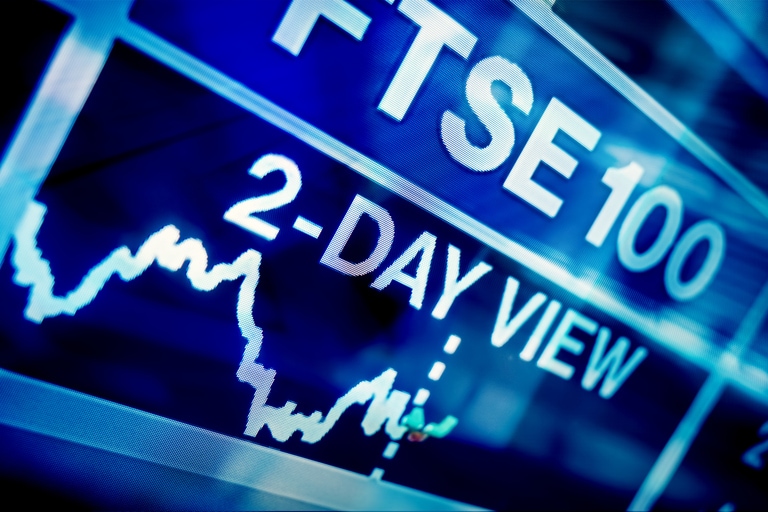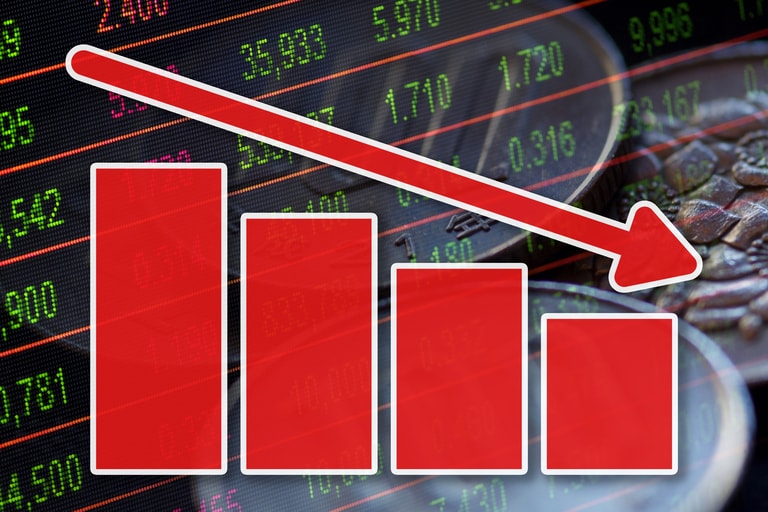Markets in Europe got off to fairly subdued start to the week yesterday, while US markets once again finished in the green, with the Dow setting a new record high, after some big gains for US construction giant Caterpillar, which was boosted after US lawmakers finally signed off on a new $1trn infrastructure bill. The new funds are expected to be used to improve roads, bridges, and other transportation projects, as well as upgrading broadband infrastructure.
Some of the edge was taken off the positive mood by the Federal Reserve just as markets were closing, after a warning that prices of risky assets were becoming vulnerable to significant declines in its latest financial stability report.
As a result, today’s European market open looks set to be a slightly negative one, with the main focus today on the latest Germany ZEW expectations survey which last month hit a 20-month low, and looks set to weaken further in November, from 22.3 to 20. The latest Germany trade numbers are also expected to point to weakness in its exports to China. We also have the latest US PPI numbers for October, which are likely to be a leading indicator for tomorrow's CPI report.
Less than a week after we heard from Fed chair Jay Powell at his post meeting press conference last week, we’ll get to hear from him again later today, when he speaks at an online conference, along with Bank of England governor Andrew Bailey. ECB president Christine Lagarde will also be speaking at an ECB forum; however, she is unlikely to be saying anything different from the remarks she made yesterday, where she expressed confidence that current higher levels of inflation are transitory in nature. While there may be an element of truth in that in some parts of the euro area, supply chain disruptions in other parts of the euro area, specifically in Germany, are at the highest levels since the 1970s, and potentially eroding confidence in the ECB’s mandate towards price stability. ECB chief economist Philip Lane went as far to say that the eurozone was in a completely different situation to other countries, which is probably true if you aren’t Germany.
As far as the UK and the US is concerned, the situation is much more closely aligned, with the Federal Reserve coming under fire for potentially being behind the curve, while the Bank of England has come under fire for the mixed signals it continues to send markets about their monetary policy intentions. Yesterday Fed vice-chair Richard Clarida warned that US rates could start to head higher before the end of next year, while the Bank of England could nudge rates higher at some point over the next 12 months, although the timing of that has become much more difficult to predict since the events of last week. Bank of England governor Andrew Bailey once again, without any hint of irony given last week’s shambles, reiterated his view that the central bank would act if labour market data continued to improve in the coming months, even though unemployment isn’t part of the central bank's mandate.
US central bank officials will certainly be hoping that US PPI will finally start to show signs of topping out given the increases seen since the start of the year when it was at 1.7%. Today’s October numbers are expected to level out at 8.6%, unchanged from September, but still 2% above where they were in May, and usually a leading indicator for CPI which is due tomorrow, and which is also expected to rise sharply. Core PPI also rose sharply to 6.8%, with close attention also set to be on the monthly numbers for any signs of a slowdown as well. While some of these costs have been passed on by companies, as shown by recent earnings numbers, there is rising concern as to how long this can continue before consumers decide to stop spending, especially as some of the biggest price increases are manifesting themselves into food and energy.
EUR/USD – has continued to pull away from last week’s low at 1.1514 but needs to overcome the 1.1620 area to open a move towards the 50-day MA and the 1.1680 area. Below 1.1500 targets the 1.1400 area.
GBP/USD – decent rebound off last week’s low at 1.3425, but we need to push on through the 1.3600 level to stabilise, and open up the 1.3720 area. A break below 1.3400 is needed to signal a move towards 1.3160.
EUR/GBP – failed again at the 200-day MA yesterday, with resistance at the 0.8600 area. We still have support at the 0.8520 area. A break below 0.8520 opens up the 0.8470 area.
USD/JPY – the recent rebound may well have run its course having failed to overcome resistance at the November 2017 peaks at 114.75. A break below 113.00 opens up the prospect of a move towards the 112.40 area.
CMC Markets erbjuder sin tjänst som ”execution only”. Detta material (antingen uttryckt eller inte) är endast för allmän information och tar inte hänsyn till dina personliga omständigheter eller mål. Ingenting i detta material är (eller bör anses vara) finansiella, investeringar eller andra råd som beroende bör läggas på. Inget yttrande i materialet utgör en rekommendation från CMC Markets eller författaren om en viss investering, säkerhet, transaktion eller investeringsstrategi. Detta innehåll har inte skapats i enlighet med de regler som finns för oberoende investeringsrådgivning. Även om vi inte uttryckligen hindras från att handla innan vi har tillhandhållit detta innehåll försöker vi inte dra nytta av det innan det sprids.






